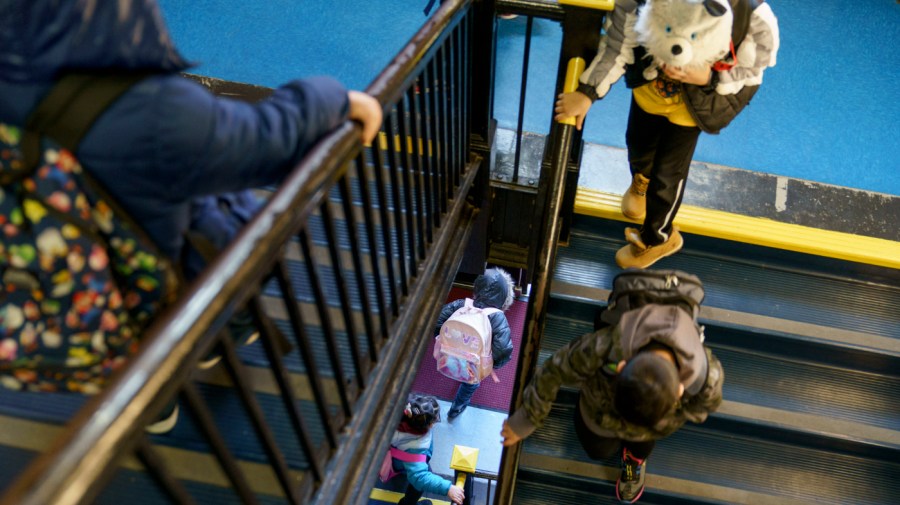It’s time to ditch the phrase “people of color.”

On the first day of his new term, President Trump did what we had come to expect during his previous term: he lied.
He said that China runs the Panama Canal. He said the 2020 election was “completely rigged.” He said that former House Speaker Nancy Pelosi (D-Calif.) rejected his offer to send National Guard troops to defend the Capitol building on January 6, 2021.
All of these allegations — and many other lies told by Trump — have been thoroughly debunked by the courts and the media. But Trump also repeated some important facts, which my Democratic colleagues would be wise to consider.
At the top of the list: People of color were one of the keys to his victory in 2024. As Trump correctly said, he recorded “significant increases in support” from Black, Latino and Asian Americans.
What should Democrats do to reverse this trend? A good first step would be to stop using the phrase “people of color.”
I know, I know: I’ve used it myself. But I decided to avoid it from now on. It patronizes different groups by imagining that they share the same views. It tricks us into believing that race determines politics, which ignores the complex realities of contemporary America.
In the early years of the United States, the phrase “people of color” had two meanings. One referred to citizens of mixed racial heritage, the other to African Americans who had been freed from slavery.
After the Civil War, it was no longer in use. Slavery was outlawed by the Thirteenth Amendment, so it makes no sense to refer to a certain portion of the black community as “free.” At the same time, the rise of state-sponsored apartheid and the notorious “one drop” rule—that anyone with any black ancestry was black—made the mixed-race category obsolete as well. You can be white or black, but not both.
Instead, African Americans called themselves “Coloreds,” a name that still identifies their most respected activist organization: the National Association for the Advancement of Colored People. “Coloreds” remained the preferred term until the late 19th century, when “Negro” began to replace it.
Meanwhile, other Americans were cohesive around a set of identities. Chinese and Japanese people became “Asians”. Mexicans and Puerto Ricans became “Hispanics.” There were thousands of Indian tribes, increasingly known as “Native Americans.”
But these different groups did not imagine themselves as “people of color” until the 1970s, when activists argued that they shared a common experience: bigotry at the hands of whites. A 1983 anthology by Women of Color declared, “Racism affects all of our lives, but only white women can ‘afford’ to remain oblivious to these effects.” “The rest of us struggled to breathe or bleed from our necks.”
There was also a belief that if these different minorities cooperated in unity, they could muster political power to challenge white dominance. As New Yorker author Tami Kim noted, “‘people of color’…helped present a united front against those in power—who were almost always white and male.”
But none of these premises make sense anymore. After the 2020 killing of George Floyd, some Black and Indigenous Americans resented the term “people of color” because it seemed to negate their distinct experiences in the United States. They replaced “BIPOC” — Black, Indigenous, and People of Color — which highlighted their unique histories.
Growing numbers of Hispanics and Asians believe the term invalidates their experiences as well. The “people of color” model was based on the idea that America was a white supremacist society that didn’t—or didn’t want to—give them a fair chance.
But that’s not how many non-whites saw it. In a 2018 poll, 77% of Hispanics agreed that “most people who want to get ahead get there if they are willing to work hard,” while only 62% of the general public believed that statement.
Most important of all, as the 2024 election has confirmed, many “people of color” simply do not agree with each other. While Trump made huge gains among Hispanic voters, for example, the increase in black support was much smaller.
But many people — including many white Democrats — still cling to the myth that black scholar Tyler Austin Harper described as “nice whites and saintly blacks and browns teaming up every four years to try to save the country from bad whites.”
In Philadelphia, where I live, the biggest political issue last year was whether a new arena should be built downtown for our professional basketball team. I opposed the construction of the proposed plaza, because I thought it would harm the Chinatown that borders it. But it was popular among black clergy and other parts of Philadelphia’s black community, who believed it would create employment opportunities for African Americans.
I am white. Did my criticism of the downtown square align me with “people of color” or did it put me in confrontation with them?
The answer is both, of course, because different ethnic minorities do not always see the world in the same way. It’s time we acknowledge that, instead of pretending that they do, or worse, that they should.
Jonathan Zimmerman teaches education and history at the University of Pennsylvania. He is a member of the advisory board of the Albert LePage Center for History in the Public Interest.




Post Comment